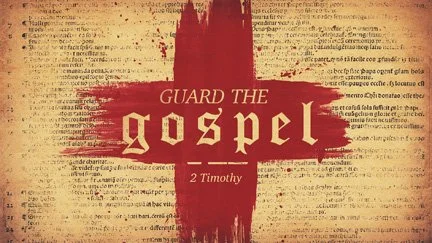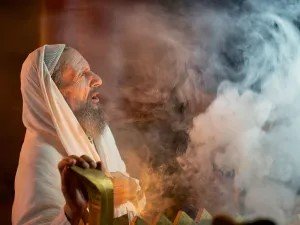Dr. Harold Mauney was pastor of the irst Baptist Church in Taylorsville, Kentucky a number of years ago when CB radios were at the height of their popularity. Sometimes CB transmissions would interfere with commercial radio and tv signals, and even public address systems. One Sunday morning, Dr. Mauney got up and started his pastoral prayer. “O Lord,” he said, and suddenly over the PA system came a response from a CB operator, “Now you got me, what do you want?”
Don’t you wish prayer were really that easy? That when you spoke God’s name, you would get an immediate, out loud response? That you would know right away that you had been heard and answered? After all, it’s not that people don’t pray. According to a recent survey, some 78% of Americans claim to pray at least once a week, and 57% say they pray at least once a day. Even 13% of agnostics and atheists pray daily; I guess they’re hedging their bets. People are reaching out to God, even when they aren’t at all sure that there’s anyone there to hear them when they pray.
Max Lucado states what many of us have thought about prayer, in his book, Before Amen: The Power of Simple Prayer. He says, “We might as well admit it. Prayer is odd, peculiar. Speaking into space. Lifting words into the sky. We can’t even get the cable company to answer us, yet God will? The doctor is too busy, but God isn’t? We have our doubts about prayer. And we have our checkered history with prayer: unmet expectations, unanswered requests. We can barely genuflect for the scar tissue on our knees. God, to some, is the ultimate heartbreaker. Why keep tossing the coins of our longings into a silent pool. He jilted me once … but not twice.”
In my years as a pastor, I have probably had more questions about prayer from parishioners than any other subject, except possibly heaven. People have asked me whether I thought God hears prayers; whether God answers prayers; whether some prayers are more effective than others; what words they should use when they pray; how they should hold their bodies, or whether they should pray with eyes open or closed; when they should pray; and even what name to call God in their prayers. Christians know they should pray, and yet they often feel uncomfortable praying, or even talking about praying. It’s like prayer is somehow for “holy” people, not for real, normal, everyday people.
Arthur Paul Boers, a Mennonite pastor in Ontario, wrote about his own experience of prayer: “When I was [young], I found it easy to pray … But as the years went by, I found it harder and harder to pray. Part of it grew from my anguish over the death of my sister. Sometimes I no longer knew what to talk about with God. Part of it came from doubts about prayer – if God already knows everything, what should I tell him?” And yet, the greatest and the most humble of Christians would all testify to the necessity and power and transformative nature of prayer. Martin Luther said, “The less I pray, the harder it gets; the more I pray, the better it goes.
Certainly, prayer was a significant part of the spiritual life of Jesus. Harry Emerson Fosdick, an American pastor in the early 20th century, wrote, “The Master prayed as naturally as a child breathes. Sometimes he prayed in triumph, as on the Mount of Transfiguration …; sometimes he prayed in grief, as in the Garden of Gethsemane … He spent whole nights in prayer, arose long before day to pray, or at the sunset hour withdrew alone to commune with God … He preceded the crises of his life and followed his hard and perplexing labors with prayer, and if the solitude of place was lacking, he could withdraw into the solitude of his own soul … Just one thing the disciples are reported to have asked the Master to teach them; they wanted him to teach them how to pray.”
Max Lucado wrote of their request, “The only tutorial they ever requested was on prayer. They could have asked for instruction on many topics; bread multiplying, speech making, storm stilling. Jesus raised people from the dead. But a ‘How to Vacate a Cemetery’ seminar? His followers never called for one. But they did want him to do this: ‘Lord, teach us to pray.’” They wanted him to teach them to pray, partly because they knew that prayer was such an important part of his life. Lucado wrote, “Jesus prayed before he ate. He prayed for children. He prayed for the sick. He prayed with thanks. He prayed with tears. He had made the planets and shaped the stars, yet he prayed. He is the Lord of angels and Commander of heavenly hosts, yet he prayed. He is co-equal with God, … and yet he devoted himself to prayer.” And I would add, if Jesus felt the need to pray, then how much more do I need to spend time in prayer?
On the face of it, prayer seems simple enough. We speak and God listens. God speaks and we listen. As Lucado says, “Prayer is not a privilege for the pious, not the art of a chosen few. Prayer is simply a heartfelt conversation between God and his child.” And yet, we still need help with praying. We need someone to teach us how to do it. Like the disciples, we ask Jesus, “Lord, teach us to pray.” And when the disciples asked, Jesus did not give them a lecture on prayer. He did not teach them the doctrine of prayer. He gave them a simple, quotable, repeatable prayer.
There are, in fact, two versions of the Lord’s Prayer, one in the book of Matthew and this one in the book of Luke. The one in Matthew is longer; in the King James Version, it contains only 66 words. It can be prayed in less than a minute. And yet this concise, simple prayer has been written about by the early Church Fathers, like Origen, Tertullian, and Augustine, by Thomas Aquinas and Martin Luther and John Calvin. It has been used in public worship and private prayer. The way that we usually pray the Lord’s Prayer is not actually found in the Bible at all; the word “trespass” doesn’t occur in either version, nor does either version contain the closing, “For thine is the kingdom, and the power, and the glory, forever.” But what matters is not so much the exact words of the prayer, so much as what it teaches us about prayer.
The Lord’s Prayer teaches us to pray to our Father, or more accurately, to our Daddy. Abba. The name Jesus called God. Prayer is an intimate conversation with someone who loves us as a loving parent. God is not some distant, scary, hard-hearted figure that we need to appease. God is the One who loves us best in the world, the One who wants what is best for us all the time. God is the One who walks with us, every step of every way on every single day of our lives. God is as close to us as our next breath. And the prayer reminds us that we depend on God as children depend on a parent to provide for their daily bread. We were not meant to go it alone in this life; we have a companion, a provider, someone who will equip us for the journey. But we can’t stockpile God’s provisions; we receive them one day at a time, as we need them. We have to learn to count on God for today’s need, and then for tomorrow’s, and then for the day after that. God is faithful and God is reliable. We can trust God.
The Lord’s Prayer teaches us that our forgiveness is based on our ability to forgive others. We cannot hold grudges against people who have done us wrong and expect God to forgive us when we do something wrong. We can’t spend our lives wanting revenge on the ones who have hurt us and expect God to let go of the times we have hurt God. When we hold on to the hurts, when we refuse to forgive, we push the love out of our hearts, not only the love we should have for other people, but also the love we should have for God. And when that happens, we cannot receive forgiveness that comes from the love of God for us.
The Lord’s Prayer may be short and simple, but its impact cannot be overstated. It has had profound meaning for Christians throughout history and has nourished every generation of believers. Will Campbell, a Baptist preacher and author, made this observation about all the places the Lord’s Prayer is used: “Coronation of queens at Westminster Abbey and revival meetings under an Appalachian brush arbor. Blessing of the shrimp fleet in Gulfport and last words uttered on the sinking Titanic. Matins at a convent school in Kenya and baccalaureate at Harvard. Blue and gray at Gettysburg … Ecclesia and aimless vagrants. A dying old man’s baptism in a bathtub and a little girl’s confirmation in San Juan.”
Some people might question how an ancient prayer could make an impact on anyone in this day and age. What does it matter that we repeat this prayer, and teach it to our children? Well, let me give you one example from my own life.
When I was about 14 years old, I went on a camping trip with my Girl Scout troop. We camped beside a lake and the next day we went white water canoeing on a nearby river. There had been a lot of rain recently, so they had opened an extra wheel in the dam. That meant that the river that was usually about 3 feet deep was more like 6 feet deep. I was in the next-to-last canoe, and somehow we got separated from the group ahead of us. We took the wrong turn when we came to a fork in the river and soon found ourselves in a narrow section, where tree branches stretched out over and into the water. Our canoe swung broadside against a branch underwater and tipped over. My life jacket got caught on the branch, and I couldn’t get up. I could see out of the water, but I couldn’t get my head up. I just knew I was going to drown. But I finally managed to tear the life jacket and get out. The people in the canoe behind us had also tipped over, and they got out okay, but their canoe floated downstream without them.
The four of us carried our one canoe downstream until we came to the wider part of the river again. We got in the canoe, four people with just one paddle, and set off to try and catch up with our group. But only a few hundred yards downstream, we hit a tree stump and tipped over again. I clung to the top of the stump, cold, scared, and certain that I was going to die in that river. And I prayed, the only prayer I could think of, a prayer we sometimes said in church. “Our Father, who art in heaven, hallowed be thy name. Thy kingdom come; thy will be done on earth as it is in heaven.” That was all I could remember, so I just kept saying it over and over and over again. Obviously, I did make it home that day. But what I most remember about the experience was the comfort that I found in repeating that short, simple prayer.
Jesus’s disciples needed help with prayer. They asked Jesus to teach them to pray. And the Lord’s Prayer is what Jesus taught them. Over the next four weeks, I am going to teach you some other prayers, and some other ways of praying. People are different, and different kinds of prayers feel more natural, more comfortable to different people. So, it’s good to learn different prayer styles and find some that feel right to you. And it’s good to try some ways of praying that feel uncomfortable, too, because they can help you grow spiritually. But none of the prayers could ever take the place of this most basic Christian prayer. Dietrich Bonhoeffer, the German pastor and teacher, said, “The Lord’s Prayer is not merely the pattern prayer, it is the way Christians must pray. If they pray this prayer, God will certainly hear them.”




























